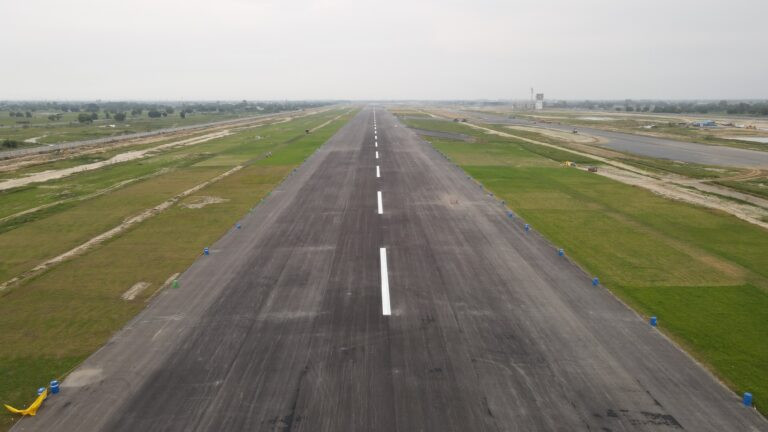Noida International Airport (NIA) has made significant progress toward its official opening with the successful calibration of its Instrument Landing System (ILS) and Precision Approach Path Indicator (PAPI), essential navigation tools that ensure the highest safety standards for aircraft landings. This achievement, completed on 14th October, marks a critical phase in NIA’s operational readiness, highlighting its commitment to establishing a state-of-the-art aviation hub in India.
A Beech King Air 360ER aircraft from the Airports Authority of India (AAI) conducted the calibration, working alongside the Directorate General of Civil Aviation (DGCA) to ensure optimal alignment and accuracy. The calibration process began on 10th October and involved meticulous testing of both the ILS and PAPI systems. These systems are integral for supporting safe and efficient landing operations, especially during low-visibility conditions, such as heavy fog or rain, which are common challenges for aviation safety.
Understanding the ILS and PAPI
The Instrument Landing System (ILS) is a sophisticated navigation aid that enhances pilot precision during approach and landing, particularly in adverse weather conditions. It consists of two main components, The localiser component helps align the aircraft with the runway centreline by providing horizontal guidance, thus allowing pilots to maintain their path accurately during the approach and the Glide Path Antenna which offers vertical guidance, directing the aircraft along a safe descent angle to the runway.
ILS technology has become a standard at major airports globally for its ability to minimise delays and support consistent, safe landings, which ultimately reduces operational disruptions during poor weather. At Noida International Airport, the successful calibration of this system is expected to enhance its operational efficiency, improve safety protocols, and establish it as a reliable hub for both domestic and international flights.
In addition to the ILS, the PAPI is another critical safety component calibrated during this operation. The system comprises a series of lights positioned beside the runway to visually indicate the correct descent angle to pilots. This setup is instrumental in assisting pilots in maintaining a safe approach, further supporting safe landings under all visibility conditions.
Importance of calibration
The calibration of these systems aligns Noida International Airport with international safety and operational standards, paving the way for its expected operational launch. As NIA prepares to position itself as one of India’s premier airports, these developments are crucial for its goal of meeting global standards in passenger safety, navigation, and efficiency.
This milestone reflects NIA’s progress in establishing a high-performance aviation infrastructure and showcases India’s commitment to expanding its airport facilities to meet the needs of a rapidly growing aviation market. For passengers and airlines, this achievement promises enhanced reliability and fewer delays, contributing to a positive experience for those flying in and out of Noida.




